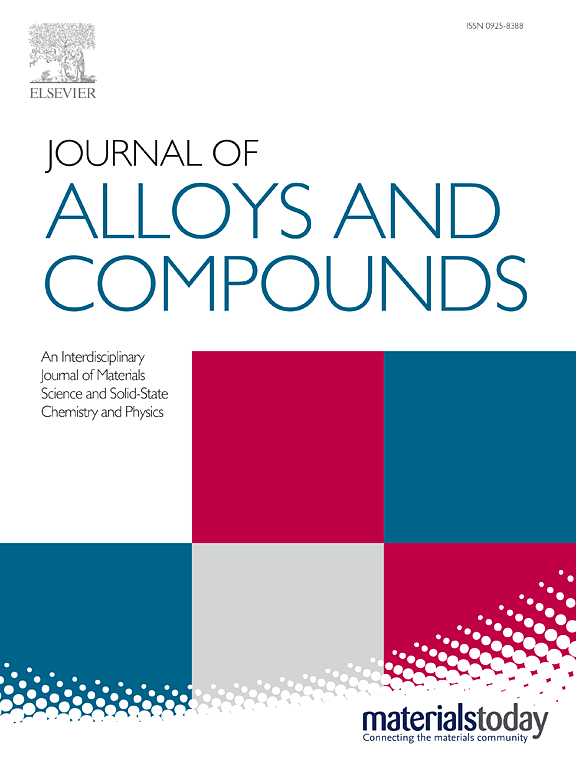Metal-doped Fe@MXene/CdS Schottky junction photocatalysts for efficient H2O2 generation and self-Fenton degradation of TC
IF 6.3
2区 材料科学
Q2 CHEMISTRY, PHYSICAL
引用次数: 0
Abstract
The integration of the Fenton reaction with photocatalysis has been recognized as an effective strategy for both energy generation and pollutant degradation. However, the conventional Fenton process necessitates the addition of hydrogen peroxide (H2O2), and the cycling efficiency of the Fe3+/Fe2+ conversion is constrained by pH levels. In this study, we synthesized Fe@MXene/CdS composites to facilitate the in situ generation of H2O2 under natural pH conditions. The combination of Fe-doped MXene and CdS initiates a self-Fenton reaction upon visible light irradiation. The unique structural properties of MXene enhance the cycling efficiency of Fe3+/Fe2+ conversion, thus improving the overall performance of the system. As a result, a highly efficient self-Fenton reaction system was successfully developed. The Fe@MXene/CdS catalyst exhibited remarkable chemical stability and photocatalytic activity. The H2O2 production reached 355.24 μmol/L, with a TC degradation rate of 97.20%. Experimental results indicate that the Fe@MXene/CdS catalyst possesses excellent capabilities for efficient H2O2 production and rapid pollutant degradation. Furthermore, its potential applications in other fields, such as antimicrobial activity, suggest new directions for future energy development and environmental protection efforts.金属掺杂Fe@MXene/CdS Schottky结光催化剂用于高效H2O2生成和TC的自fenton降解
Fenton反应与光催化的结合已被认为是一种既能发电又能降解污染物的有效策略。然而,传统的Fenton工艺需要添加过氧化氢(H2O2),并且Fe3+/Fe2+转化的循环效率受到pH水平的限制。在本研究中,我们合成了Fe@MXene/CdS复合材料,以促进在自然pH条件下原位生成H2O2。掺铁MXene与CdS的结合在可见光照射下引发自芬顿反应。MXene独特的结构特性提高了Fe3+/Fe2+转换的循环效率,从而提高了系统的整体性能。成功地开发了一种高效的自fenton反应体系。Fe@MXene/CdS催化剂具有良好的化学稳定性和光催化活性。H2O2产率达到355.24 μmol/L, TC降解率为97.20%。实验结果表明,Fe@MXene/CdS催化剂具有高效生成H2O2和快速降解污染物的优异性能。此外,它在其他领域的潜在应用,如抗菌活性,为未来的能源发展和环境保护工作提供了新的方向。
本文章由计算机程序翻译,如有差异,请以英文原文为准。
求助全文
约1分钟内获得全文
求助全文
来源期刊

Journal of Alloys and Compounds
工程技术-材料科学:综合
CiteScore
11.10
自引率
14.50%
发文量
5146
审稿时长
67 days
期刊介绍:
The Journal of Alloys and Compounds is intended to serve as an international medium for the publication of work on solid materials comprising compounds as well as alloys. Its great strength lies in the diversity of discipline which it encompasses, drawing together results from materials science, solid-state chemistry and physics.
 求助内容:
求助内容: 应助结果提醒方式:
应助结果提醒方式:


